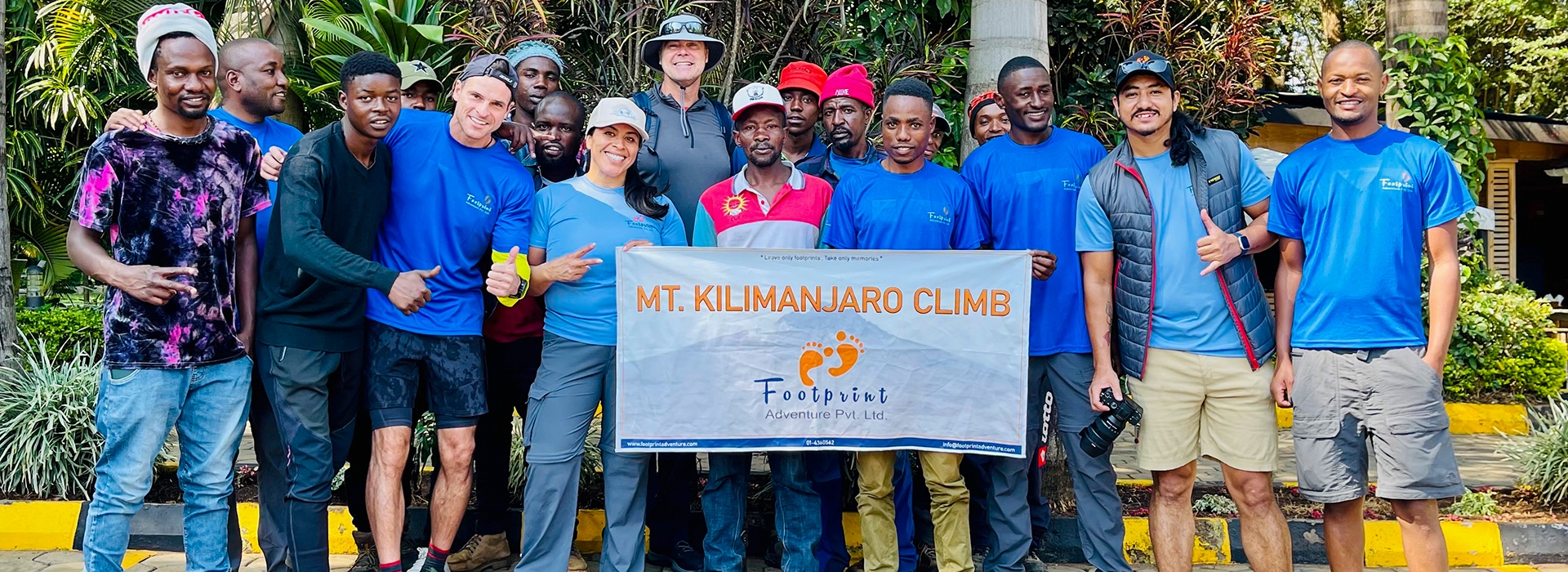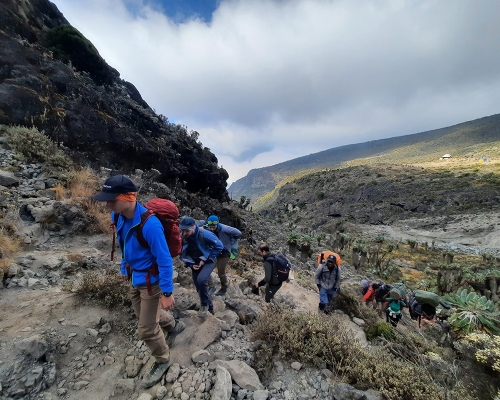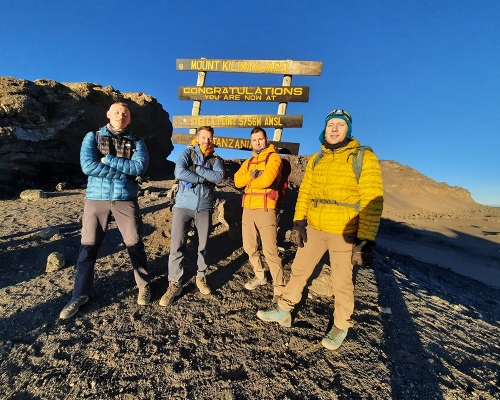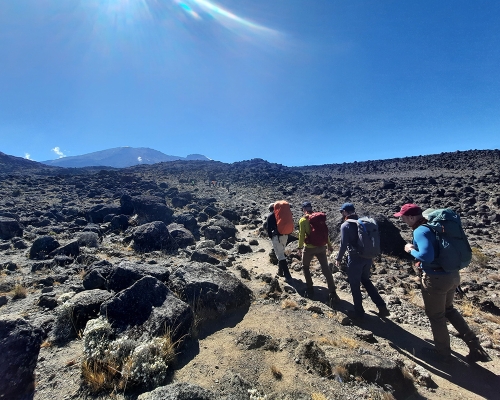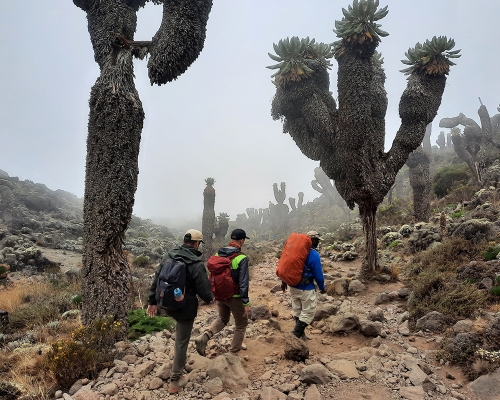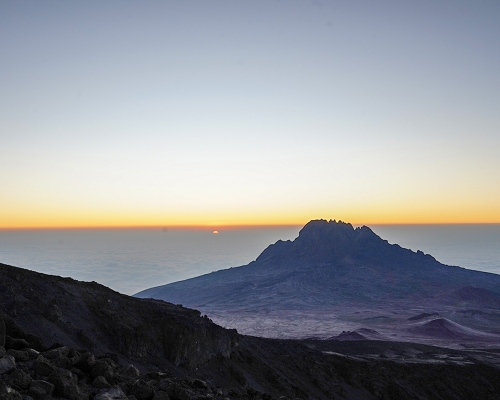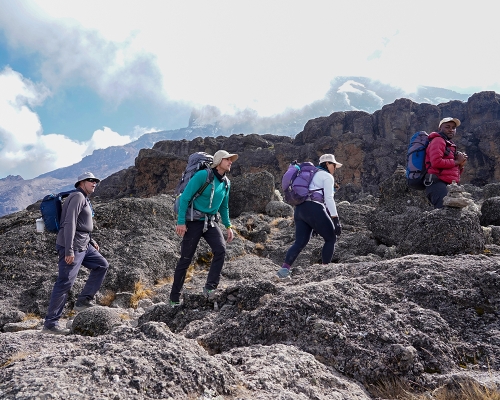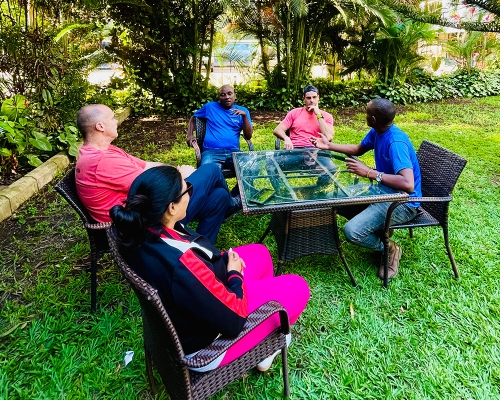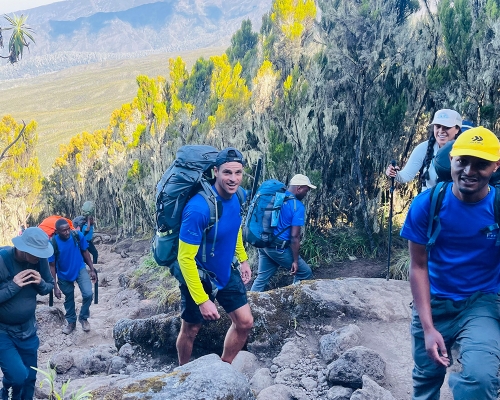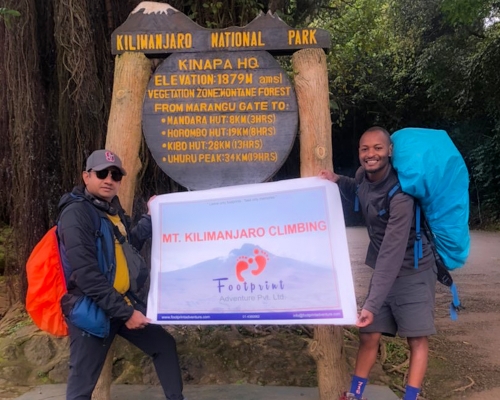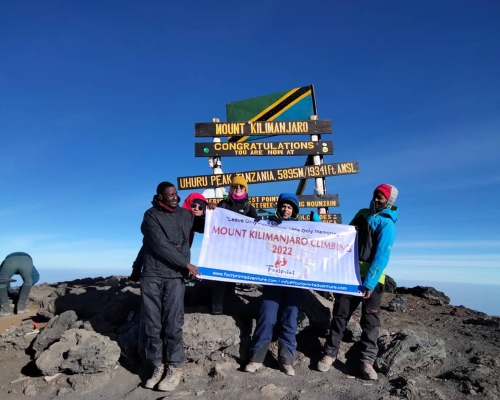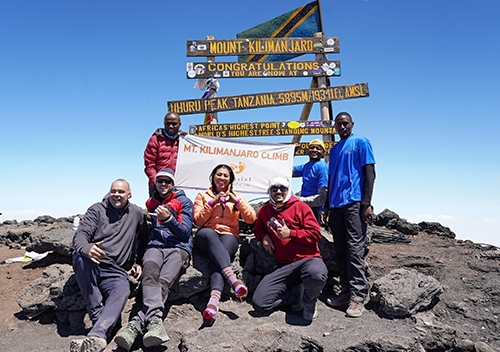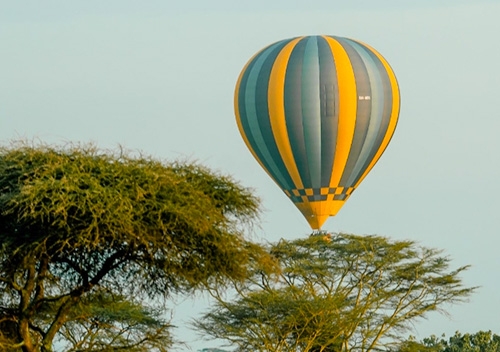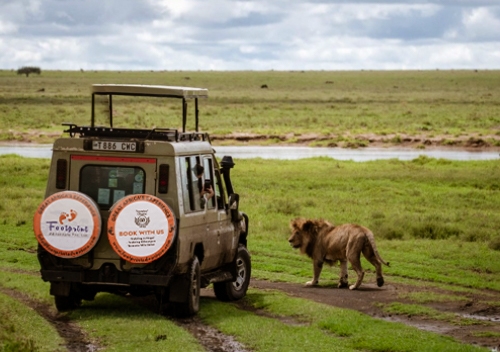Kilimanjaro Climb from the Marangu Route in Tanzania is fortunate to have a rich environment and breathtaking scenery. The renowned Kilimanjaro climb takes place in this lovely location. Due to its direct path and incline, which is more gentle than other routes on the mountain, Marangu is preferred by many adventurers. The Marangu Route, commonly referred to as the "Tourist Trail" or the "Coca-Cola Route," is the oldest and original route on Mount Kilimanjaro. It is one of the most popular routes because it is the only route on the summit that offers climbers access to hut accommodations. Pillows and mattresses are typically provided for climbers by trip providers. However, trekkers must bring their sleeping bags. The initial Kilimanjaro ascent route was constructed along this path.
Though some climbers prefer to stay in huts rather than camp, the dormitory-style huts have a communal dining area. On the Marangu Route, you will be sharing the hut with many other climbers in open dormitory arrangements. Mount Kilimanjaro is approached by the route from the southeast. Since there aren't many steep climbs, the route is generally not too difficult. Because you ascend and descend along the same path, this route is less picturesque than the other Kilimanjaro routes. The scenery is still very delightful, though. You travel through a rainforest, an icy summit, a high-altitude desert, and a moorland. This route is among the best for climbing Kilimanjaro during the rainy season due to the hut accommodations. Before we begin our trek on a cleared ridge trail through the rainforest, our crew members pack and prepare our supplies and luggage once we arrive at Marangu Gate for registration. We depart from Mandara Hut after a lovely night there and head toward Horombo Hut. Horombo's extra day and night are perfect for proper acclimatization. We walk to reach Kibo Hut from Horombo Hut. We start to push for the summit after a decent rest in Kibo Hut, which requires a lot of physical and mental work.
Due to its gradual slope and straightforward path, the Marangu Route is a very popular option among the seven Kilimanjaro routes. It can be crowded because it is a busy route. However, if you'd rather simply avoid camping and stay in a cozy hut, this is the best option for you. Because you'll be returning in just 6 days after climbing to the top of Uhuru, you'll need to be in good physical condition for this 8-day trek. Also, the six-day trek comprises an additional night at Horombo Hut and a quick, three to four-hour day hike to Zebra Rocks, which has an elevation gain of only 280m.
Highlights of Kilimanjaro Climbing via Marangu Route
- Ascend Mount Kilimanjaro to Uhuru Peak, the world's tallest freestanding summit
- Explore Africa's diverse cultures, unique ethnicities, and friendly people
- You travel through a rainforest, an icy summit, a high-altitude desert, and a moorland
- Accommodations in dormitories in mountain huts
- Enjoy the varied terrains of Tanzania
- Scale the highest mountain in Africa most comfortably and simply to its summit
- Since this path is uncomplicated, anyone can participate in this breathtaking journey without prior hiking experience
- A simple and cost-effective way to reach the "Roof of Africa" summit
- An additional day is reserved for acclimatization at Horombo Hut
The Difficulty of Climbing Mount Kilimanjaro
The Marangu Route is one of the easiest routes to the summit of Kilimanjaro compared to other routes. According to professional mountaineers, technical climbs necessitate a specific level of ability, expertise, or equipment. It is essential to remember that Mount Kilimanjaro is not a particularly challenging peak. This adventure would be made difficult by the high altitude. With the proper guidance, acclimatization, rest, and understanding of the routes, you would be able to achieve your objective. Thanks to the wonderful itinerary we've arranged, your body will have plenty of time to acclimatize. In addition, because you must walk for 5-7 hours every day to complete this ascent, you must be in average physical condition. Read more about the Difficulty Level of Kilimanjaro.
Best Time To Climb Kilimanjaro from the Marangu Route
Kilimanjaro can be climbed throughout the year, but the Tanzanian monsoon season can make it challenging. March through June and October through December often get the most rainfall. Parts of the trail are coated in mud and dirt as a result of this season's excessive rainfall. The dry season is the optimal time to climb Mount Kilimanjaro. From June through October, the weather is considerably more favorable for climbing. Following the onset of the southeast monsoon, there are around three months of dry weather, which is great for climbing Kilimanjaro and enjoying the clear skies. Between January and March, there is a second pause in the rainy season. This is the cooler of the two climbing seasons, increasing the possibility that snow may cover the summit of Kibo. Read more about the best time to climb Kilimanjaro via the Marangu Route.
Facts About Kilimanjaro Climbing
- With more than 80% of their mass lost since 1912, the mountain's snow crowns are thinning. In fact, according to scientists, they might be entirely free of ice within the next 20 years
- Kilimanjaro's glaciers are thought to be about 11,700 years old
- Sheila MacDonald, a woman from Scotland, was the first female to achieve the summit
- The highest free-standing mountain in the world and the tallest mountain on the African continent is Mount Kilimanjaro
- Mawenzi, Shira, and Kibo are the three volcanic cones found on Kilimanjaro. The highest mountain, Kibo, remains dormant and has the potential to erupt again, while Mawenzi and Shira are extinct
- On the journey, you will find nearly every type of natural system, including cultivated land, rain forest, heath, moorland, highland desert, and an arctic mountaintop.
The Marunga Route is an option for those seeking a more genuine high-altitude hiking and climbing experience. Those with a higher risk tolerance should use this option. There is also an option for the Machane Route and Lemosho Route. Footprint Adventure provides a qualified local guide, the best price, and exceptional service when it comes to climbing Mount Kilimanjaro.

